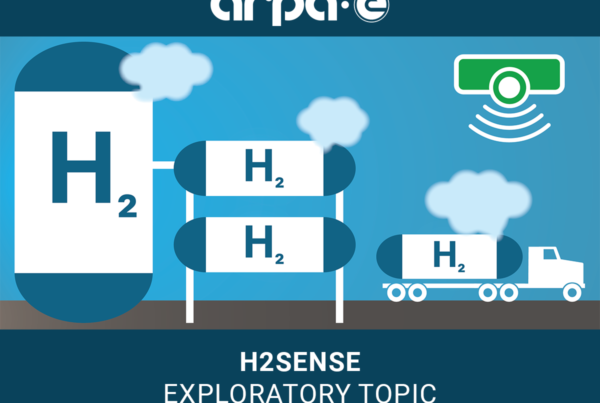
SAIC Group officially released the world’s first fuel cell MPV, SAIC MAXUS EUNIQ 7, and at the same time announced the first “hydrogen strategy” in China’s automotive industry: at least ten fuel cell models will be launched by 2025 For complete vehicle products, SAIC JieHygen Technology (a high-tech enterprise that provides fuel cell products and engineering services for the industry) has reached a market value of tens of billions.
SAIC has established a fuel cell R&D and operation team with more than 1,000 employees and formed a production and sales scale of 10,000 fuel cell vehicles.
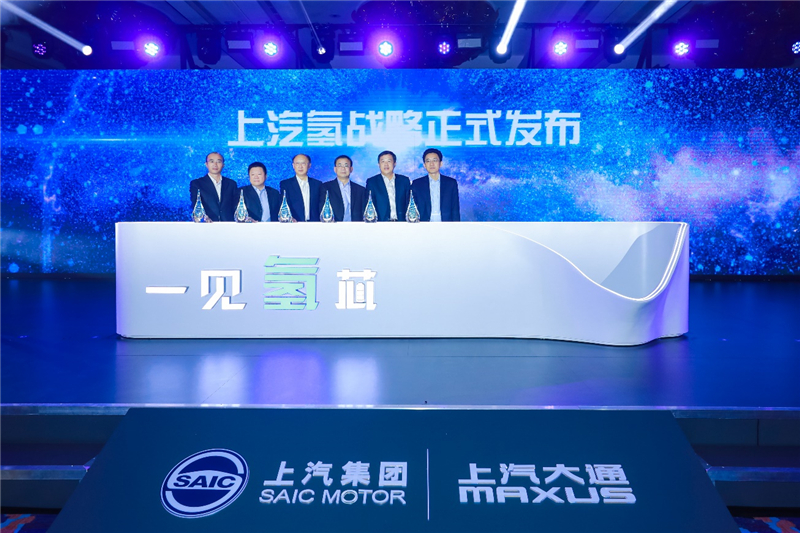
[SAIC officially releases hydrogen strategy]
Accelerating the development and application of fuel cell technology is of great strategic significance for enhancing the core competitiveness and international influence of Chinese auto companies in the field of new energy vehicles, promoting the innovative and green development of China’s auto industry, and enhancing my country’s energy strategic security.
China’s auto leader blew the industry’s energy revolution “Journeyman”
In today’s world structure, the energy issue has become a development bottleneck for many countries. On the one hand, my country’s energy consumption continues to grow, and energy security is of the utmost importance; on the other hand, my country’s energy system is dominated by fossil energy, and the pressure to reduce carbon emissions is huge. Therefore, China needs to advance the energy revolution, build a clean, low-carbon, safe and efficient energy system, and seize the commanding heights of global energy technology innovation and industrial development.
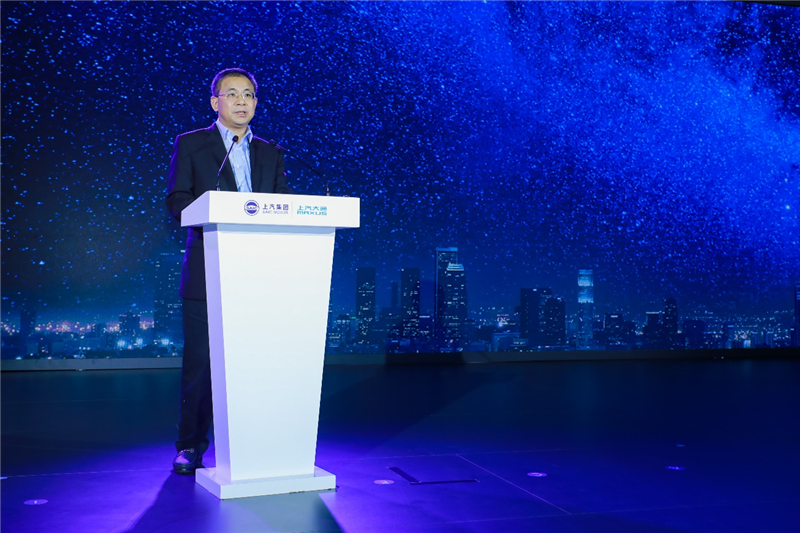
[SAIC President Wang Xiaoqiu gives a keynote speech]
As a secondary energy, hydrogen energy has significant advantages such as zero-carbon, high efficiency, energy interconnection media, storage, safety and controllability, and can be promoted and applied in many fields such as transportation, industry, and construction. Fuel cell vehicles that use hydrogen as the “fuel” have significant advantages such as pollution-free, high efficiency, high load, fast refilling, and long battery life. Accelerating the development of fuel cell vehicles has become an important part of my country’s new energy vehicle strategy. The “Energy-saving and New Energy Vehicle Technology Roadmap” formulated by the Ministry of Industry and Information Technology of the People’s Republic of China clearly stated that by 2030, the promotion and application of fuel cell vehicles will reach one million vehicles and the goal of building more than 1,000 hydrogen refueling stations.
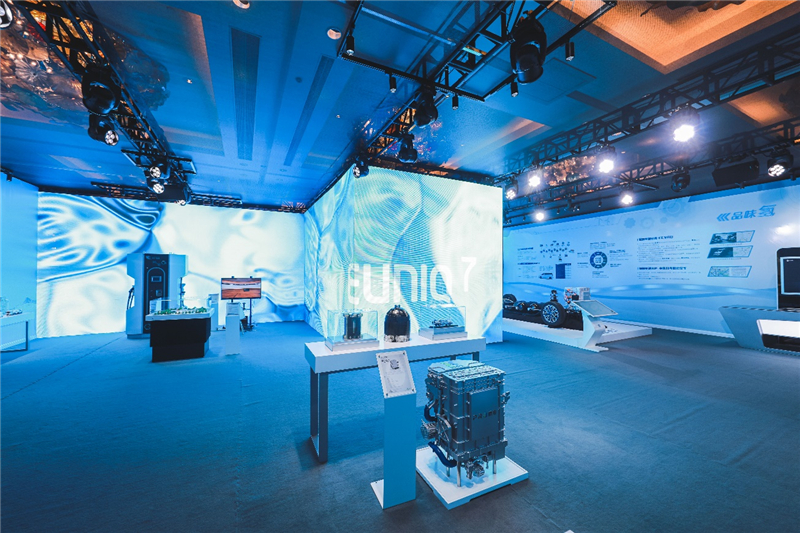
【Hydrogen Ecological Exhibition】
The world’s first fuel cell MPV, SAIC MAXUS EUNIQ 7, is equipped with SAIC’s latest self-developed third-generation fuel cell system. Taking the product’s successful launch as a starting point, SAIC will promote the mass application of a new generation of autonomous fuel cell technology in heavy trucks, light trucks, buses and other commercial vehicle products based on user usage scenarios, and launch new fuel cell passenger vehicle products in due course .
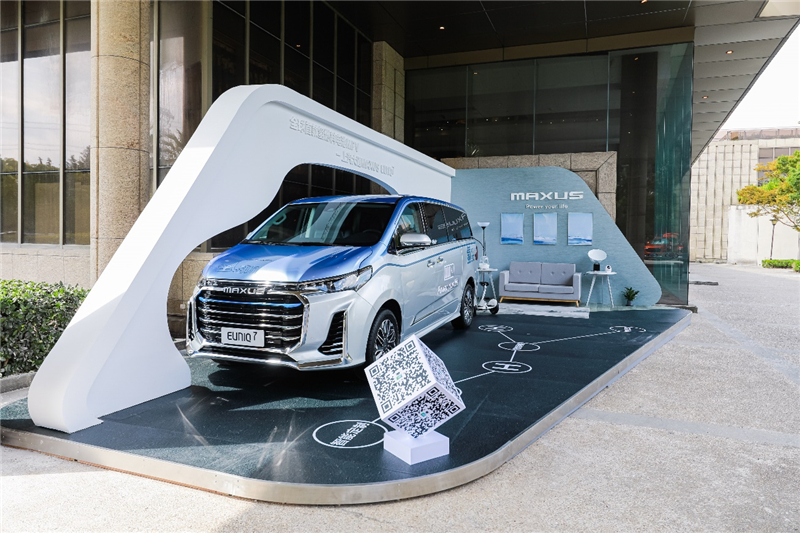
【SAIC MAXUS EUNIQ 7】
In the next five years, SAIC will strive to achieve the four major goals of “ten, hundreds, thousands, and tens of thousands”: that is, by 2025, to launch at least ten fuel cell vehicle products, and Jie Hydrogen Technology will reach a market value of tens of billions and establish thousands of people. The above fuel cell R&D and operation team has formed a production and sales scale of 10,000 -unit fuel cell vehicles, with a market share of over 10%. By 2025, SAIC’s self-developed fuel cell system will achieve cumulative sales of more than 30,000 sets, becoming the leader of domestic independent fuel cell systems. By 2030, SAIC will become a fuel cell vehicle manufacturer with complete independent intellectual property rights and global competitiveness.
Twenty years of concentrated deployment of independent core technology in the world’s top
SAIC has always adhered to innovative and green development, and is committed to providing users with clean and efficient travel methods to better fulfill social responsibilities. As the earliest automobile company in China to develop fuel cell technology research and development, SAIC launched the Phoenix No. 1 fuel cell vehicle project in 2001. In the past two decades, SAIC has continued to invest in solid research, and has accumulated more than 3 billion R&D expenses. So far, it has obtained 511 fuel cell related patents and has actively participated in the formulation of 15 fuel cell national standards. SAIC’s “Fuel Cell Vehicle Key Technology Research and Development and Industrialization Project” won the special prize of the 2019 “China Automobile Industry Science and Technology Progress Award”.
JieHygen Technology, a subsidiary of SAIC Motor, has mastered the complete positive development capabilities from the development of core components of the stack (bipolar plates, membrane electrodes), stack integration, fuel cell system integration to power system integration, and vehicle integration. Independent intellectual property rights. Its PROME P390 fuel cell system has various technical indicators such as power, power density and low temperature start, which are comparable to the world’s top levels represented by Toyota and Hyundai. The PROME M3H stack, which is the core component of the fuel cell system, has completely realized independent design and development, and all 58 first-level components have been localized, and the degree of independence and localization rate have reached 100%.
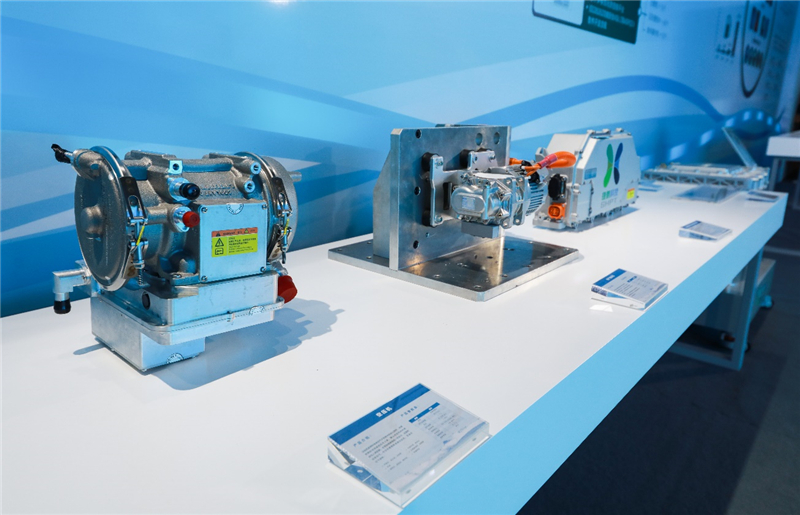
【Hydrogen Ecological Exhibition】
Simultaneous commercialization of passengers and businesses, operating mileage of nearly 5 million kilometers
SAIC is the only company in the global industry that has achieved the commercialization of multiple types of fuel cell vehicles, with a total commercial operation mileage of nearly 5 million kilometers and a cumulative carbon reduction of more than 600 tons, which is equivalent to planting 120,000 trees. In 2014, the Roewe 750 fuel cell car became the first fuel cell car in China to realize the announcement. In 2016, the Roewe 950 fuel cell sedan became the first domestic fuel cell sedan to be announced, sold and licensed. In 2017, Chase FCV80 fuel cell light passenger became the earliest and only commercialized fuel cell wide-body light passenger in China. In 2018, the Roewe 950 fuel cell sedan and Sunward fuel cell buses were selected as designated vehicles for the “United Nations Development Program (UNDP) Promoting China’s Fuel Cell Vehicle Commercial Development Project”. Sunward fuel cell buses will start at the end of 2018 Commercialized operation on the 114 bus line in Jiading, Shanghai. In 2020, SAIC Yuejin’s fuel cell logistics vehicles and special fuel cell vehicles will be announced by the Ministry of Industry and Information Technology. In June 2020, SAIC Maxus MAXUS EUNIQ 7, the world’s first fuel cell MPV, officially rolled off the assembly line and will be available soon.
Among them, 407 SAIC MAXUS FCV80 fuel cell light buses have carried out demonstration operations in Shanghai, Fushun, Foshan, Dalian, Wuxi, Changzhi (Shanxi), and Qingdao, with a cumulative operating mileage of more than 4 million kilometers. Vehicles in Fushun area encountered extreme cold weather for two months throughout the year. The average minimum temperature was lower than -20°C, and the extreme minimum temperature even reached -30°C. FCV80 fuel cell light passenger vehicles were generally operating in good condition. In 2019, the FCV80 fuel cell light passenger started the operation of the Wuxi Airport shuttle route. The current total operating mileage of the vehicle exceeds 160,000 kilometers, and the passenger load rate has reached 80%.
SAIC will adhere to the “dual engine drive” of technology and the market, create “low-cost, long-lasting, and high-reliability” vehicle products based on market user needs, aiming at “long life, high performance, and high power” to continuously improve and develop technology , To accelerate the commercialization of fuel cell vehicles.
Build China’s “Hydrogen Friends Group” and work together to build a hydrogen energy society
SAIC is also continuing to strengthen its sincere cooperation with upstream and downstream partners in the industrial chain of parts, hydrogen production, hydrogen transportation, hydrogen storage, and hydrogenation, and join hands to build China’s “hydrogen friendship group” to jointly promote the overall implementation of the industrial chain.
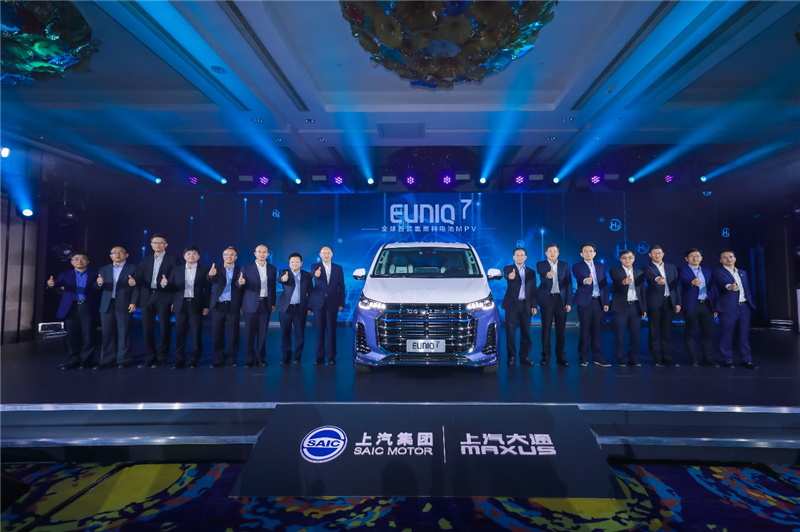
[SAIC “Hydrogen Friends Group” witnessed the world’s first fuel cell MPV SAIC MAXUS EUNIQ 7 world premiere]
In January 2018, SAIC Group and Shanghai Chemical Industry Park reached a strategic cooperation to jointly promote the demonstration operation and infrastructure construction of hydrogen fuel cell vehicles in the chemical industry zone. In April 2020, SAIC Motor and Shanghai Airport Group signed a cooperation agreement. The two parties explored the use of fuel cell vehicles as general-purpose vehicles, passenger shuttle buses, and other specialized vehicles for ground services, track maintenance, and locomotive support, and planned joint construction. Infrastructure such as hydrogen refueling stations. In July 2020, SAIC and China Baowu signed a cooperation agreement to jointly create a “one park and two corridors” (Wusong Hydrogen Energy Industrial Park, A30 Highway Hydrogen Corridor, Lingang-Nantong Hydrogen Corridor) national hydrogen energy industry demonstration Zone, jointly promote the landing of fuel cell vehicles and hydrogen refueling stations in the demonstration zone.
Looking forward to the future, SAIC will work with partners such as Baowu Group, Shanghai Airport Group, Shanghai Chemical Industry Zone, Jiading District, etc., to help the construction of platforms such as the “Hydrogen Corridor in the Yangtze River Delta” and the “Hydrogen Energy Ecosystem in the Yangtze River Economic Zone”, and firmly grasp the country. Together with the policy opportunities provided by the Shanghai Municipal Government, we will continue to improve the economics of hydrogen fuel production, storage and transportation, continue to promote the construction of new infrastructure, jointly build a shared hydrogen energy society, and continuously enhance development and well-being.
Source: SAIC
Read the most up to date Fuel Cell and Hydrogen Industry news at FuelCellsWorks




